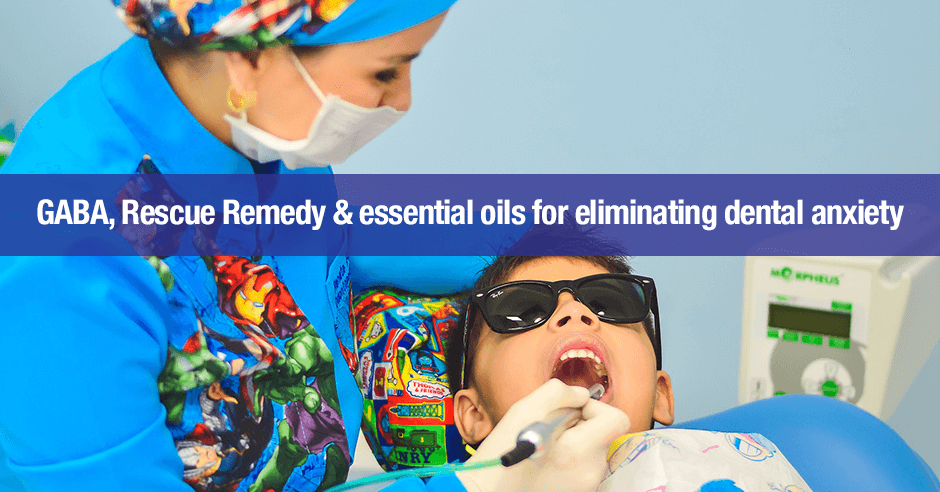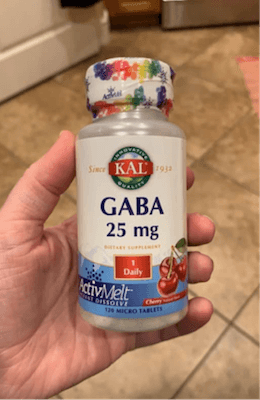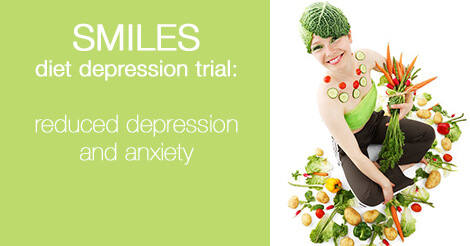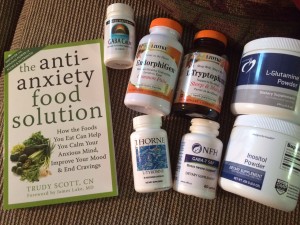
Have you used GABA to help with the anxiety you experience when going to the dentist or with one of your children who are fearful during a dental visit? I recently shared a comment on Facebook about how delighted I was with some of the feedback from Integrative Medicine for Mental Health attendees for my recent GABA presentation. I had a mom, Katie, respond and share how happy she was that GABA helped her 8 year old son on a trip to the dentist. She shared this:
My 8 year old has some anxiety, OCD-like tendencies, and sensory processing issues. Going to the dentist is extremely difficult. They recommended full sedation, which I refused. Instead, I brought his GABA, Rescue Remedy, and essential oils. He got 2 cavities filled like a champ!
I had forgotten the GABA at first and he was struggling. I stopped the dentist, gave my son a GABA lozenge to dissolve in his mouth, and within 30 seconds he was calm. The dentist was SO impressed. It really does work! I’m so grateful I learned about it from you!
GABA really does work this quickly – 30 seconds is not unusual – and this effectively and I was thrilled for this mom and her son.
A few other moms asked about which GABA product Katie used for her son, which one I recommend, and can GABA be used with children.
I like GABA Calm for kids and adults for the physical type of tension anxiety. When using with a child we want to start low and slowly increase. I’ll have the mom start them on one quarter (or sometimes less) of the GABA Calm product (which contains 125mg of GABA) and increase based on the trial and how their symptoms improve.

Katie used a 25mg GABA product by Kal, pictured here. I really like that it’s a nice low amount and that it uses what they call ActivMelt™ technology, so it melts in the mouth. Using GABA this way or sublingually or opening a capsule of a GABA-only product and holding it in the mouth is the most effective way to use GABA.
Depending on sensitivity issues you may need to test it out and consider some of the other ingredients if you notice tummy upset or something else.
Rescue Remedy and an essential oil blend
Katie also shared this about the Rescue Remedy and essential oil blend she used when they arrived (before giving him GABA):
The Rescue Remedy was very helpful. We use it on the whole family. For oils, I used a blend called Tranquility from Butterfly Express.
I had him inhale the oil plus applied it behind his ears and on the carotid artery on his neck. The dental assistant commented on how good that oil works because she felt really relaxed and calm.
I find GABA to be more effective so start there but many moms like Katie, find Rescue Remedy, a Bach Flower remedy, to help. I remember using Rescue myself, many years ago before I had discovered GABA.
The Tranquility blend contains: Blue Tansy, Geranium, Chamomile German, Lavender Officinalis, Palmarosa, Patchouli, Orange Sweet, Tangerine, and Ylang Complete. I’m not familiar with this company but the essential oils in this blend are wonderful.
Both of these – the oils and Rescue remedy – helped initially but it seems it was the GABA that gave him the most effective calming relief.
Thank you Katie for sharing on Facebook and giving me permission to share your son’s GABA dentist story here. Well done for getting your dentist on board with both the essential oils and GABA.
Anxiety nutritional solutions resources for dentists
Going to the dentist can be stressful at the best of times and downright terrifying in some instances and I want kids and adults alike to know they have options like this.
Now, let’s get my book, The Antianxiety Food Solution, into the hands of all dentists so they can help their anxious and fearful patients with GABA and other nutritional approaches!
And let’s also talk to the dentist about diffusing calming essential oils in the treatment and/or waiting rooms or at least encouraging their patients to bring their own blends.
Keep in mind that serotonin support with tryptophan or 5-HTP should also be considered if there is a phobia and fear that is so intense, the child won’t even go to the dentist. Katie mentions her son has OCD-like tendencies too and serotonin support helps with these symptoms as does a gluten-free diet in many children (as illustrated by this case study).
Have any of the above helped your dental anxiety? Or helped with anxiety your children have experienced going to the dentist?
If you are a dentist have you found any of the above helps your patients?

